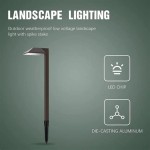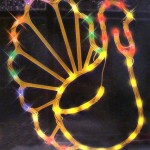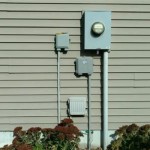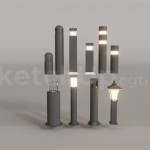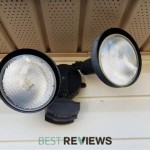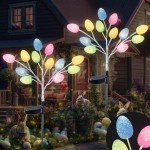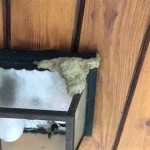How To Light An Outdoor Wreath: A Comprehensive Guide
Illuminating an outdoor wreath is a simple yet effective way to enhance curb appeal and create a welcoming atmosphere, particularly during the holiday season. Properly lit wreaths can add a touch of elegance and festive cheer to any home. This article provides a comprehensive guide on the various methods and considerations involved in lighting an outdoor wreath, ensuring a safe and visually appealing display.
Choosing the Right Lights
The selection of appropriate lights is crucial for achieving the desired aesthetic and ensuring both safety and longevity. Several types of lights are commonly used for outdoor wreaths, each with its own set of advantages and disadvantages. Understanding these differences is essential for making an informed decision.
LED Lights: Light Emitting Diode (LED) lights are the most popular choice for outdoor wreath lighting due to their energy efficiency, durability, and long lifespan. They consume significantly less power than traditional incandescent bulbs, resulting in lower electricity bills. LEDs also generate very little heat, reducing the risk of fire hazards, especially when used on wreaths made of flammable materials such as dried foliage or pine needles. Furthermore, LED lights are available in a wide range of colors, shapes, and sizes, offering versatility in design. They are also more resistant to temperature fluctuations and moisture, making them ideal for outdoor applications. When selecting LED lights, consider the color temperature, measured in Kelvin (K). Warmer temperatures (around 2700K-3000K) produce a soft, inviting glow, while cooler temperatures (around 4000K-5000K) create a brighter, more contemporary look.
Incandescent Lights: While less common due to their higher energy consumption and shorter lifespan, incandescent lights offer a classic warm glow that some people prefer. However, they are more prone to burning out and generate a significant amount of heat, posing a potential fire hazard, especially in dry climates. Incandescent lights are also more susceptible to damage from weather elements. Therefore, if incandescent lights are chosen, ensuring they are specifically rated for outdoor use and regularly inspecting them for any signs of damage are paramount.
Battery-Operated Lights: Battery-operated lights provide a convenient option for wreaths located in areas without easy access to an electrical outlet. These lights typically use LED bulbs to conserve battery power. When using battery-operated lights, it is important to choose high-quality batteries to maximize their lifespan and prevent leakage, which can damage the light set. Consider using rechargeable batteries for a more sustainable and cost-effective solution. Ensure the battery pack is protected from the elements by using a waterproof container or wrapping it securely in plastic.
Solar-Powered Lights: Solar-powered lights offer an eco-friendly and cost-effective solution for illuminating outdoor wreaths. These lights use solar panels to collect sunlight during the day and store the energy in rechargeable batteries. At night, the lights automatically turn on, providing a soft, ambient glow. Solar-powered lights are ideal for wreaths located in sunny areas. However, their performance may be affected by cloudy weather or limited sunlight exposure. Look for solar lights with a high-capacity battery and a durable, weather-resistant design.
Installation Techniques for Optimal Illumination
The method of installing lights on a wreath significantly impacts the overall appearance and effectiveness of the lighting. Proper techniques ensure even distribution of light and secure attachment to prevent the lights from falling off or becoming damaged.
Wrapping Technique: The most common approach is to wrap the lights around the wreath, ensuring each section is adequately illuminated. Begin by securing the end of the light strand to the back of the wreath using floral wire, zip ties, or small clips. Then, carefully wrap the lights around the wreath, spacing them evenly apart. Overlapping the lights in certain areas can create a brighter, more concentrated effect. Ensure the lights are snug but not too tight, as this can damage the wires or the wreath itself. Use floral wire or zip ties to secure the lights at regular intervals to prevent them from slipping.
Weaving Technique: For a more subtle and integrated look, consider weaving the lights into the wreath. This involves carefully threading the light strand through the foliage or decorations of the wreath, concealing the wires and creating a seamless effect. This technique is particularly effective for wreaths with a dense or intricate design. Use a small tool, such as a crochet hook or a pair of tweezers, to help guide the lights through the wreath. Secure the lights with floral wire or hot glue as needed to prevent them from coming loose.
Using Light Clips: Light clips are a convenient and efficient way to attach lights to a wreath without damaging the foliage or decorations. These clips are designed to hold the light bulbs securely in place and can be easily attached to the branches or stems of the wreath. Light clips are available in various sizes and styles to accommodate different types of lights and wreaths. Simply snap the clips onto the lights and then attach them to the wreath at desired intervals.
Concealing the Wires: Regardless of the chosen installation technique, it is important to conceal the wires as much as possible to maintain a clean and professional look. Use floral wire or zip ties to tuck the wires behind the foliage or decorations of the wreath. Avoid leaving any wires exposed, as this can detract from the overall aesthetic. For battery-operated or solar-powered lights, the battery pack or solar panel can be discreetly hidden behind the wreath or integrated into the design. Ensure the battery pack is easily accessible for replacing batteries or adjusting the settings.
Safety Considerations and Weather Protection
Safety is paramount when lighting an outdoor wreath. Taking necessary precautions minimizes the risk of electrical hazards, fire, and damage from weather elements. Adhering to safety guidelines ensures a safe and enjoyable display.
Using Outdoor-Rated Lights: Always use lights specifically designed and rated for outdoor use. These lights are constructed with weather-resistant materials and are designed to withstand exposure to rain, snow, and sunlight. Look for lights that are UL-listed or ETL-certified, indicating that they have been tested and meet safety standards. Avoid using indoor lights outdoors, as they are not designed to withstand the elements and can pose a significant safety hazard.
Protecting Electrical Connections: Protect electrical connections from moisture to prevent short circuits and potential fire hazards. Use waterproof connectors or wrap the connections in electrical tape to seal them from the elements. If using an extension cord, ensure it is specifically rated for outdoor use and is plugged into a ground fault circuit interrupter (GFCI) outlet. Keep extension cords away from areas where they could be tripped over or damaged by lawn equipment.
Preventing Overloading Circuits: Avoid overloading electrical circuits by connecting too many light strands together. Check the manufacturer's instructions to determine the maximum number of light sets that can be safely connected in series. Overloading a circuit can cause the breaker to trip, resulting in a power outage. It can also overheat the wiring and potentially lead to a fire. If needed, use multiple outlets or power strips to distribute the electrical load.
Securing the Wreath: Ensure the wreath is securely attached to the door or wall to prevent it from falling and causing injury or damage. Use a sturdy wreath hanger or appropriate mounting hardware to support the weight of the wreath and the lights. Consider the wind exposure of the location and choose a method that can withstand strong gusts of wind. Periodically inspect the wreath and the mounting hardware to ensure they are in good condition and securely fastened.
Regular Inspection and Maintenance: Regularly inspect the lights and the wreath for any signs of damage or wear. Replace any damaged or burned-out bulbs promptly. Check the wiring for any frayed or exposed wires. Ensure the lights are clean and free from debris. If the wreath is made of natural materials, such as pine needles or dried flowers, consider spraying it with a fire-retardant coating to reduce the risk of fire. Store the wreath properly when not in use to protect it from damage and extend its lifespan.
By carefully considering these factors, homeowners can ensure their outdoor wreaths are both beautifully illuminated and safely installed, adding a touch of festive cheer to their homes throughout the year. Proper planning, selection of appropriate materials, and diligent attention to safety are key to a successful and enjoyable display.

How To Make A Large Lighted Outdoor Wreath Pinch Of Joy

How To Wrap A Wreath With Lights Ehow

Diy Porch Light Decoration Outdoor Decorations Greenery Wreaths

How To Hang A Giant Outdoor Wreath Ella Claire Co

How To Hang A Giant Outdoor Wreath Ella Claire Co

Diy Wreath Hangers Dells Daily Dish

The Best Diy And Decor Wreath This Is Beautiful Because There Are So Many Lights Wreaths Spirit Holiday Display

Best Choice S 48in Pre Lit Outdoor Wreath Led Metal Holiday Decor W 140 Lights Bow Green Red Target

How To Hang A Giant Outdoor Wreath Ella Claire Co

Are You Ready To Light Up Your Holiday With A Wreath Hang It On Yo Outdoor Wreaths Lights Trees
Related Posts

